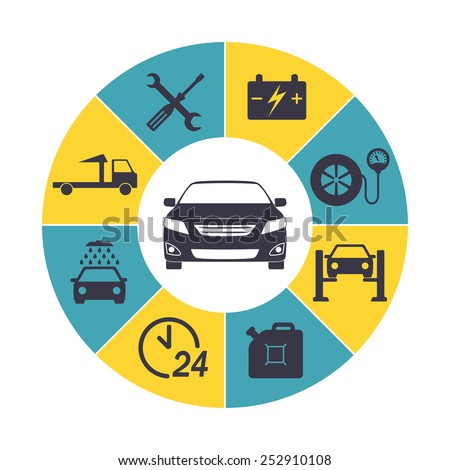Looking For Clarity On The Warning Lights Displayed On Your Cars And Truck'S Control Panel? Find Out Just How They Connect To Your Vehicle'S Health And Safety
Looking For Clarity On The Warning Lights Displayed On Your Cars And Truck'S Control Panel? Find Out Just How They Connect To Your Vehicle'S Health And Safety
Blog Article
Authored By-Lim Forbes
When you lag the wheel, those radiant warning lights on your control panel can be a bit perplexing. Do you know what they're attempting to tell you regarding your automobile's health? Recognizing the relevance of these lights is crucial for your safety and the long life of your vehicle. So, the next time one of those lights pops up, wouldn't you intend to decipher its message properly and take the needed steps to resolve it?
Common Caution Lights and Interpretations
Identify typical caution lights in your vehicle and recognize their significances to ensure risk-free driving.
One of the most typical warning lights consist of the check engine light, which signifies concerns with the engine or emissions system. If this light comes on, it's essential to have your automobile checked quickly.
The oil stress cautioning light shows low oil stress, needing instant focus to prevent engine damage.
A flashing battery light could suggest a damaged charging system, potentially leaving you stranded if not addressed.
The tire stress monitoring system (TPMS) light informs you to reduced tire pressure, affecting car stability and fuel effectiveness. Ignoring this might cause risky driving problems.
The abdominal muscle light shows a trouble with the anti-lock stopping system, endangering your ability to stop rapidly in emergencies.
Finally, the coolant temperature level alerting light warns of engine overheating, which can cause severe damage if not solved promptly.
Recognizing these typical warning lights will assist you attend to issues quickly and maintain secure driving problems.
Value of Prompt Focus
Understanding the common caution lights in your automobile is only the very first step; the significance of immediately attending to these warnings can't be highlighted enough to ensure your safety and security when traveling.
When a warning light brightens on your control panel, it's your cars and truck's way of communicating a possible concern that requires interest. Ignoring these cautions can lead to much more serious problems in the future, compromising your safety and potentially costing you a lot more out of commission.
Motivate focus to alerting lights can stop malfunctions and accidents. As an example, a flashing check engine light might indicate a misfire that, if left ignored, can create damage to the catalytic converter. Addressing this immediately can conserve you from an expensive repair work.
Similarly, a brake system cautioning light could indicate low brake fluid or worn brake pads, essential parts for your safety and security when driving.
Do It Yourself Troubleshooting Tips
If you see a caution light on your dashboard, there are a few DIY fixing tips you can attempt before looking for expert help.
The primary step is to consult your vehicle's guidebook to understand what the specific caution light shows. In some cases the issue can be as basic as a loose gas cap setting off the check engine light. Tightening up the gas cap may resolve the issue.
One more typical problem is a low battery, which can activate numerous warning lights. Checking https://brakecheck28405.dsiblogger.com/63129299/the-upcoming-age-of-vehicle-describing-trends-and-technologies-well-worth-watching for deterioration and ensuring they're safe might fix the problem.
If a caution light lingers, you can attempt resetting it by separating the auto's battery for a couple of minutes and after that reconnecting it. In addition, inspecting your car's liquid degrees, such as oil, coolant, and brake liquid, can assist troubleshoot advising lights related to these systems.
Conclusion
To conclude, comprehending your car's caution lights is crucial for maintaining your vehicle running efficiently and securely. By quickly resolving these alerts and recognizing what they mean, you can prevent pricey fixings and prospective malfunctions.
Remember to consult east side detailing for certain information on each alerting light and do something about it accordingly to make certain a trouble-free driving experience.
Remain notified, stay secure on the road!
